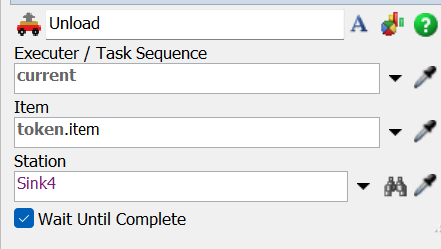Hello,
I have encounter some problem with the integration of my label. I am trying to accomplish the car to go to every station and check if there's things to pick or to load. That I used several pull from list activity, the reason for this is that I want to make sure the to be pickup list is updated. So I set each station with an unique pulled label. And set it to be the item of load.
But my problem for now is if there's things to unload activity.
For the decision code, my thought for now is like below:
(token.item.destination == token.Q2 || token.item2.destination == token.Q2)
return 1;
else
return 2;
To integrate all the possibility and return 1. But for the Item of Unload activity, I am not sure if I want to define a label that contains everything on the car how can I do this.

That I'm wondering if I use an assign label activity with custom code as below will work:
for (token.item2.destination == token.Q1 ||
token.item3.destination == token.Q1 || token.item4.destination == token.Q1 ||
token.item5.destination == token.Q1 || token.item6.destination == token.Q1)
return setlabel();
But as I try it in, there's appears to be some error. I am looking forward to any of your advice! Thank you very much!

